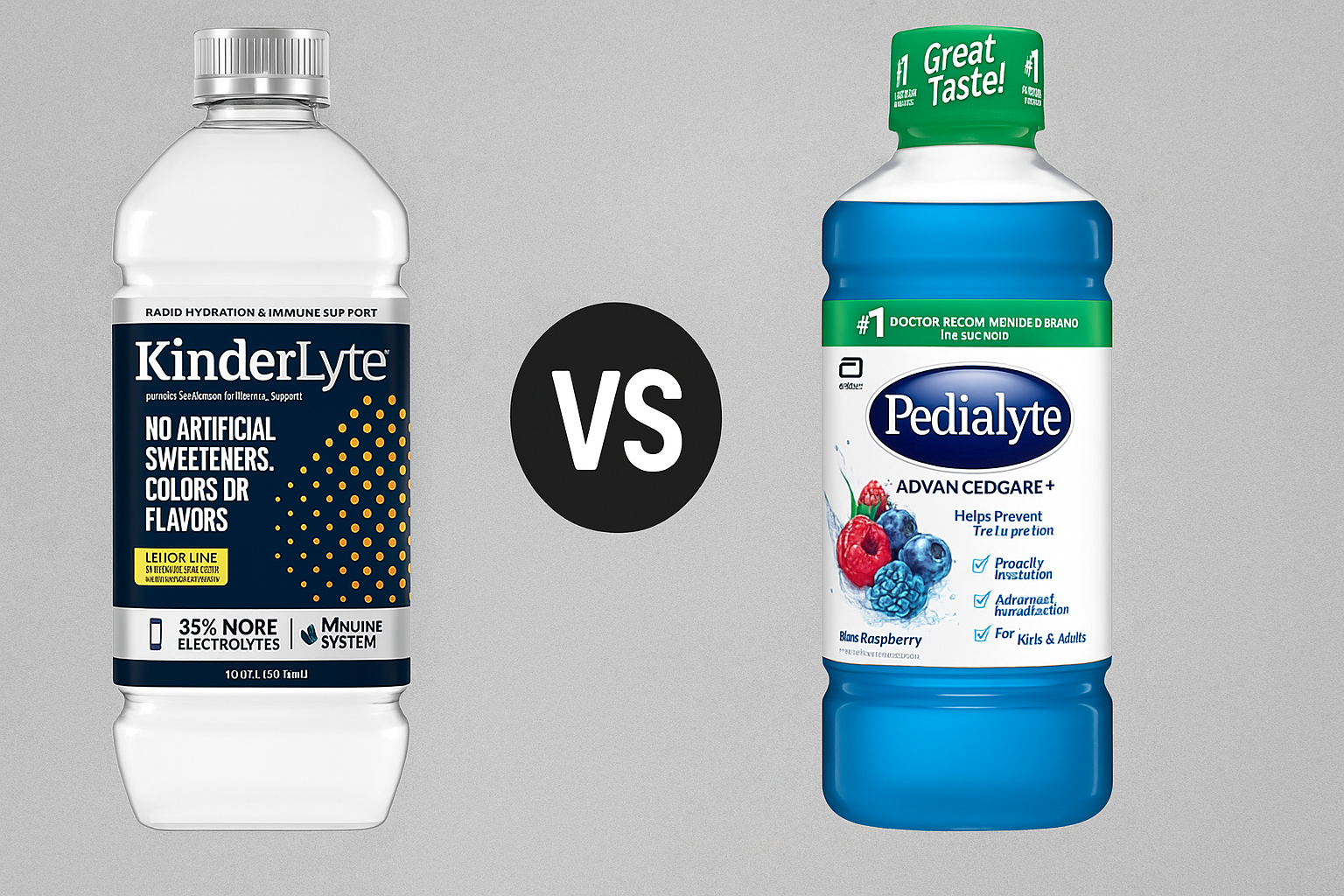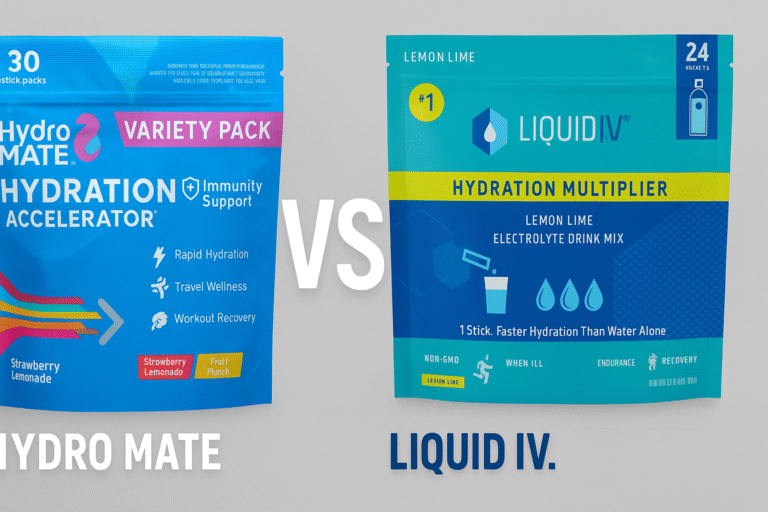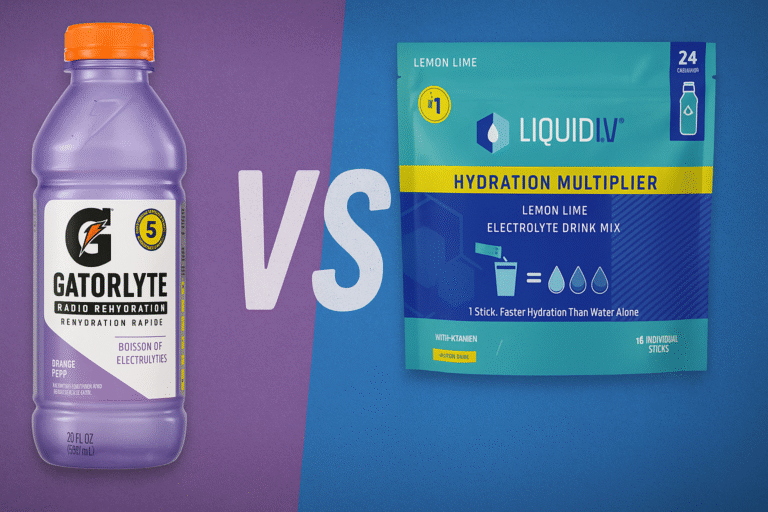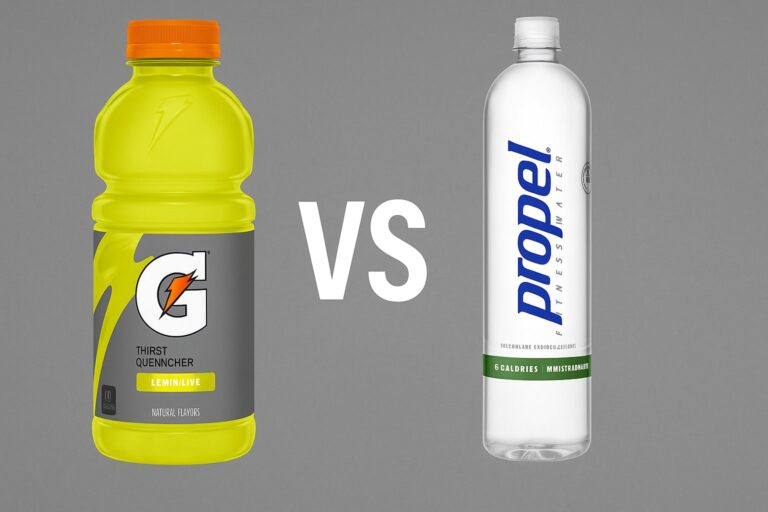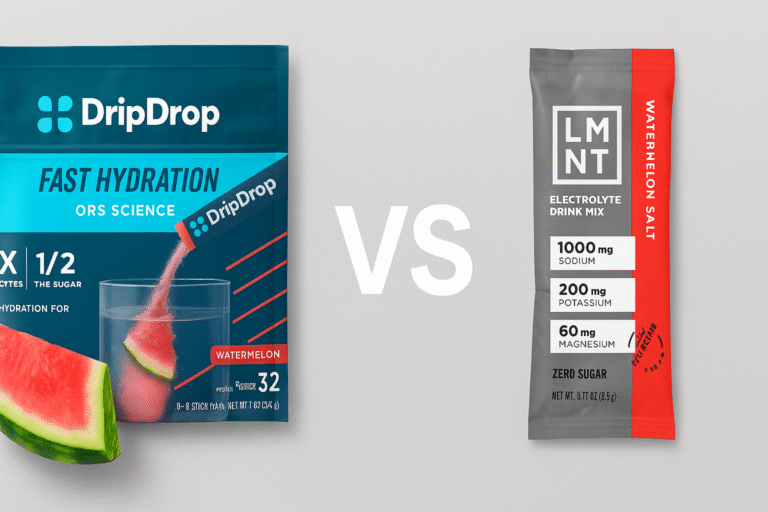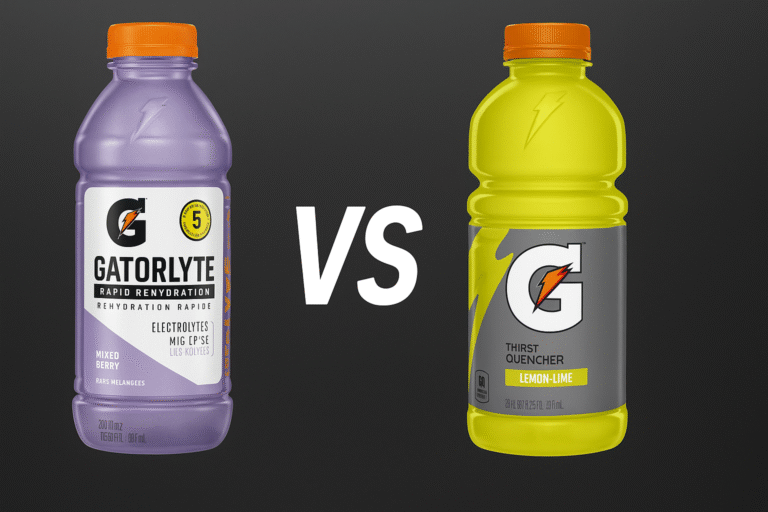Kinderlyte vs Pedialyte: A Complete Comparison
When children—or even adults—lose fluids due to vomiting, diarrhea, fever, or heavy sweating, they also lose essential electrolytes like sodium, potassium, and chloride. Simply drinking water won’t always fix the problem because water alone doesn’t restore the electrolyte balance.
That’s where oral rehydration solutions (ORS) come in. They combine water, electrolytes, and a small amount of sugar to help the body absorb fluids more efficiently.
Pedialyte has been the gold standard for decades, while Kinderlyte is a newer alternative marketed as a cleaner, more natural option. Let’s dive deep into how they compare in terms of ingredients, nutrition, effectiveness, safety, and practical use.
What are Kinderlyte and Pedialyte?
Pedialyte
- A long-standing oral electrolyte solution made by Abbott Laboratories.
- Available in multiple forms: classic Pedialyte, flavored versions, powder packets, and “AdvancedCare” with higher electrolyte concentration.
- Designed for children but widely used by adults for rehydration.
- Known for being lower in sugar than sports drinks and optimized for medical use.
Kinderlyte
- A newer ORS from KinderFarms, marketed as “clean hydration.”
- Contains no artificial sweeteners, dyes, flavors, or preservatives.
- Uses non-GMO dextrose (a simple sugar) for absorption.
- Includes zinc for immune support, in addition to sodium and potassium.
- Promoted as hydrating faster than water and containing more electrolytes than leading brands.
Nutrition and Ingredients Breakdown
Both Pedialyte and Kinderlyte are designed with the same principle: a balance of sodium + glucose to speed up fluid absorption in the small intestine. But the formulations differ slightly.
Here’s a general side-by-side overview (per 1 liter, approximate values — can vary by flavor and variant):
| Nutrient | Pedialyte Classic | Kinderlyte |
|---|---|---|
| Sodium | ~1,030 mg | ~1,150 mg |
| Potassium | ~780 mg | ~1,000 mg |
| Chloride | ~1,240 mg | ~1,250 mg |
| Zinc | Some versions only | Included in all |
| Sugar | 25 g (uses glucose; some flavored versions add sucralose/acesulfame potassium) | 20–25 g (uses only dextrose, no artificial sweeteners) |
| Flavors/Colors | Some contain artificial sweeteners, flavors, and dyes | Uses natural fruit juices and vegetable extracts |
Key differences:
- Sodium & Potassium: Kinderlyte usually has slightly higher amounts, which may help in heavier dehydration cases.
- Sugar: Both are low compared to sports drinks, but Kinderlyte sticks to dextrose only.
- Zinc: Always included in Kinderlyte, only present in select Pedialyte formulas.
- Additives: Pedialyte may include artificial sweeteners and dyes; Kinderlyte avoids them.
Variants and Options
Pedialyte
- Classic Pedialyte: Standard formula for children and adults.
- Pedialyte AdvancedCare: Higher electrolyte levels for more serious dehydration.
- Powder Packets: Portable for travel.
- Flavored Versions: Grape, strawberry, apple, bubblegum, etc.
- Pedialyte Sport: Targeted for athletes, higher sodium and sugar.
Kinderlyte
- Liquid Bottles: Family-size and kid-friendly flavors like fruit punch, strawberry, and grape.
- Powder Packets: On-the-go convenience.
- Kinderlyte Advanced: Higher electrolyte concentration for moderate dehydration.
- Organic Options: Focused on clean, natural sourcing.
Taste and Acceptance
- Pedialyte: Some kids dislike the salty aftertaste, especially in unflavored versions. Flavored Pedialyte helps, but some parents worry about artificial sweeteners.
- Kinderlyte: Uses natural fruit juices and tends to be milder and easier for children to accept. Parents who prefer “clean label” products often find Kinderlyte more appealing.
Effectiveness in Rehydration
Both brands work by the same mechanism: the sodium-glucose cotransport system, which helps the body absorb water faster than drinking plain water.
- Pedialyte: Decades of use and strong clinical backing make it highly trusted by pediatricians and hospitals.
- Kinderlyte: While newer, it is based on the same ORS science and adds zinc, which may help with recovery during diarrhea. Its “clean” formulation is a plus for ingredient-conscious families.
Pros and Cons
Pedialyte
Pros:
- Long history of proven effectiveness
- Widely available worldwide
- Multiple options (classic, advanced, sport, powders)
- Backed by doctors and clinical use
Cons:
- Some flavors contain artificial sweeteners and dyes
- Taste can be off-putting to children
- More “medical” than “natural” in image
Kinderlyte
Pros:
- Clean label: no artificial sweeteners, colors, or preservatives
- Higher sodium, potassium, and zinc content in many variants
- Naturally flavored and colored
- Easy for kids to drink due to milder taste
Cons:
- Newer, less clinical research and long-term track record
- Availability may be limited in some regions
- Higher sodium could be excessive for very mild dehydration
Safety and Side Effects
Both products are safe when used as directed, but there are precautions:
- Mild Side Effects: Stomach upset, nausea, or vomiting if consumed too quickly.
- Overuse Risks: Too much sodium can lead to high blood pressure, irritability, or swelling.
- Infant Use: Always consult a pediatrician before giving to babies under one year old.
- Severe Dehydration: If dehydration is severe or accompanied by persistent vomiting, blood in stool, or lethargy, medical treatment is required—oral solutions alone are not enough.
Practical Guidance
- For mild dehydration (sweating, minor stomach upset): Either Kinderlyte or Pedialyte will work.
- For moderate dehydration (due to diarrhea or vomiting): Pedialyte AdvancedCare or Kinderlyte Advanced may be better choices.
- For parents avoiding additives: Kinderlyte is the clear winner, with natural flavors and no artificial sweeteners.
- For availability and trust: Pedialyte remains more accessible and widely recommended by doctors.
- Taste preference: Kinderlyte often wins here, especially with kids who reject the saltiness of Pedialyte.
Final Thoughts
Both Kinderlyte and Pedialyte are effective oral rehydration solutions based on the same proven science.
- Choose Pedialyte if you want a long-trusted, widely available option with multiple variants, especially in clinical or hospital settings.
- Choose Kinderlyte if you prefer a more natural, additive-free formula with zinc included and flavors kids may like better.
Ultimately, the best choice comes down to your child’s needs, ingredient preferences, and availability in your area. For serious dehydration, always seek medical care—no electrolyte drink is a substitute for professional treatment.

